March 25
0
Posted by kavery508 | Posted in Uncategorized | Posted on March 26, 2020
Look how we’re having fun and getting smarter at home! Great to see all our friends’ faces again!
Look how we’re having fun and getting smarter at home! Great to see all our friends’ faces again!
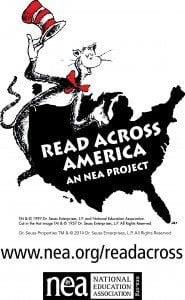 Read Across America Day was a big hit! Students in our class were treated to stories read aloud by Shrewsbury Librarian Roxanne Stark. Ms. Stark also answered questions from the crowd, promoted the awesome services available at SPL, and shared with us her lifelong love of reading and learning. Big thanks to her and to our volunteers who helped create a special morning for us!
Read Across America Day was a big hit! Students in our class were treated to stories read aloud by Shrewsbury Librarian Roxanne Stark. Ms. Stark also answered questions from the crowd, promoted the awesome services available at SPL, and shared with us her lifelong love of reading and learning. Big thanks to her and to our volunteers who helped create a special morning for us!
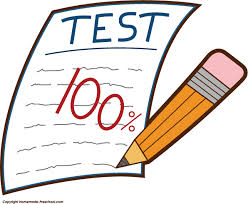 As the second trimester of school comes to an end this week, students will be taking reading tests (DRAs) and a district-wide writing assessment that tests students’ abilities with focus, organization, details and English conventions (punctuation, spelling) while producing a piece of informative writing. Quizzes and tests will also be given to measure students’ progress with math problem solving; map skills (natural/cultural features; directionality; countries vs. continents; oceans and continents; finding places on maps) and science concepts related to Matter.
As the second trimester of school comes to an end this week, students will be taking reading tests (DRAs) and a district-wide writing assessment that tests students’ abilities with focus, organization, details and English conventions (punctuation, spelling) while producing a piece of informative writing. Quizzes and tests will also be given to measure students’ progress with math problem solving; map skills (natural/cultural features; directionality; countries vs. continents; oceans and continents; finding places on maps) and science concepts related to Matter.
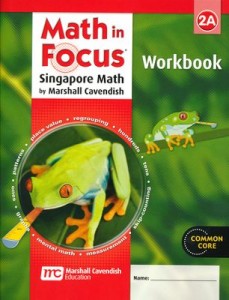 Our work with money wraps up by challenging students to solve real world problems involving computation and reasoning. Consider this problem from their workbooks: Devon spends 2 dimes at the store. Then he spends 3 nickels more. If he pays with $1.00, how much change should he get? Notice how it requires that students apply their understanding of money amounts and thinking skills in order to calculate change? Here is an awesome online game that helps kids practice these useful skills:
Our work with money wraps up by challenging students to solve real world problems involving computation and reasoning. Consider this problem from their workbooks: Devon spends 2 dimes at the store. Then he spends 3 nickels more. If he pays with $1.00, how much change should he get? Notice how it requires that students apply their understanding of money amounts and thinking skills in order to calculate change? Here is an awesome online game that helps kids practice these useful skills:
![]() Pens Wanted! As part of our work in science next week, students will be taking apart pens to observe and test the properties of their components. If you haven’t done so, please send at least one CLICKABLE pen (brand doesn’t matter) to school with your child tomorrow, and thanks!
Pens Wanted! As part of our work in science next week, students will be taking apart pens to observe and test the properties of their components. If you haven’t done so, please send at least one CLICKABLE pen (brand doesn’t matter) to school with your child tomorrow, and thanks!
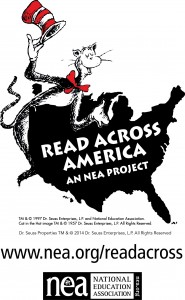 Read Across America Day is coming! This annual nationwide event is held the first week of March in honor of local author Dr. Suess’s birthday. School across the country will welcome community readers into classrooms to read aloud and share the importance of reading in their lives!
Read Across America Day is coming! This annual nationwide event is held the first week of March in honor of local author Dr. Suess’s birthday. School across the country will welcome community readers into classrooms to read aloud and share the importance of reading in their lives!
 Our reading focus this week is on finding the main idea in fiction. It’s important that students learn to identify big ideas in texts and separate them from details. To do this, students will learn to ask: What did the main character do? What did the main character want? What did the main character achieve? The answers to these questions lead the reader to understand what the page, or chapter, or book is about, thus improving their comprehension. You can practice during homework time by guiding your child through these questions during or after reading.
Our reading focus this week is on finding the main idea in fiction. It’s important that students learn to identify big ideas in texts and separate them from details. To do this, students will learn to ask: What did the main character do? What did the main character want? What did the main character achieve? The answers to these questions lead the reader to understand what the page, or chapter, or book is about, thus improving their comprehension. You can practice during homework time by guiding your child through these questions during or after reading.
Our math work this week involves money exchanges. Students will practice trading in bills and coins, such as nickels, dimes, and pennies for quarters. In this way, they should come to a better understanding of the value of units of money and become more fluent with it. Here’s a fun song we’ll be using to help us learn the concept!
![]() Pens Wanted! As part of our work in science next week, students will be taking apart pens to observe and test the properties of their components. Please send at least one CLICKABLE pen (brand doesn’t matter) to school with your child by next Monday, and thanks!
Pens Wanted! As part of our work in science next week, students will be taking apart pens to observe and test the properties of their components. Please send at least one CLICKABLE pen (brand doesn’t matter) to school with your child by next Monday, and thanks!
 As we continue our work with finding the main idea in nonfiction texts, students are taking ever more responsibility for finding keywords and creating statements that relate back to the heading and title. As an example, the picture below is from an online text (from Epic, an excellent source for student eBooks though not free). The words that are most important are owner, Mt. Vernon, and Martha. By stringing them together, we get the main idea of the page, e.g. “Washington became the owner of Mt. Vernon and lived there with his wife, Martha.” Helping kids focus in on the big idea is great to do whenever they read at home, too.
As we continue our work with finding the main idea in nonfiction texts, students are taking ever more responsibility for finding keywords and creating statements that relate back to the heading and title. As an example, the picture below is from an online text (from Epic, an excellent source for student eBooks though not free). The words that are most important are owner, Mt. Vernon, and Martha. By stringing them together, we get the main idea of the page, e.g. “Washington became the owner of Mt. Vernon and lived there with his wife, Martha.” Helping kids focus in on the big idea is great to do whenever they read at home, too.
 Our next area of study in math involves understanding and using money. Besides identifying coins/bills and their amounts, students should be able to combine various amounts of both. Consider this example:
Our next area of study in math involves understanding and using money. Besides identifying coins/bills and their amounts, students should be able to combine various amounts of both. Consider this example:
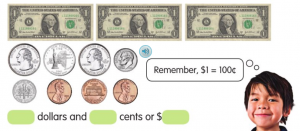 Notice how students can best solve this by starting with the larger amounts and using counting on/adding on. Students will also learn to write in dollars-and-cents notation ($1.25) and with words: one dollar twenty five cents. Students will also learn to compare 2 or more amounts of money. This can get tricky if students are still learning coin values and totaling. For example, 7 coins does not make an amount greater than 2 coins if we’re comparing 7 pennies and 2 quarters.
Notice how students can best solve this by starting with the larger amounts and using counting on/adding on. Students will also learn to write in dollars-and-cents notation ($1.25) and with words: one dollar twenty five cents. Students will also learn to compare 2 or more amounts of money. This can get tricky if students are still learning coin values and totaling. For example, 7 coins does not make an amount greater than 2 coins if we’re comparing 7 pennies and 2 quarters.
For help with homework, see the resources section of your child’s math homework folder where you will find a variety of pages on everything from coins and counting to vocabulary. If you’re following in the eBook, this is Chapter 11. Although many of us pay for things with cards instead of cash, be on the lookout for opportunities to teach your child to total amounts of coins and bills and to estimate 1) if there is enough to buy something and 2) about how much change is due!
Singing is a great way to memorize new skills! Songeez has put out a truly fantastic collection of learning songs. Here’s one of our favorites in class. You can find others (dimes, nickels, quarters, and much more) at the KindieTV website.
 In science, students have been carrying out investigations and making claims based on evidence. After learning about insulating and conducting properties, they tested a variety of materials to determine the best ones to protect their hands when holding hot items. Here are some pics of us in action, along with our awesome 100 Day presentations!
In science, students have been carrying out investigations and making claims based on evidence. After learning about insulating and conducting properties, they tested a variety of materials to determine the best ones to protect their hands when holding hot items. Here are some pics of us in action, along with our awesome 100 Day presentations!
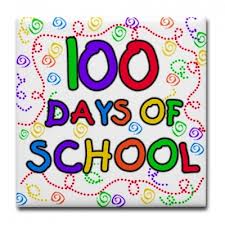 The 100th day of school is Tuesday, Feb. 11! Students are encouraged to create a project that shows understanding of numbers, operations, algebra–you name it! Some good examples can be found here!
The 100th day of school is Tuesday, Feb. 11! Students are encouraged to create a project that shows understanding of numbers, operations, algebra–you name it! Some good examples can be found here!
 We will exchange valentines in class on Friday, 2/14. There are 19 students in our class. If you need another copy of our class roster, just let me know!
We will exchange valentines in class on Friday, 2/14. There are 19 students in our class. If you need another copy of our class roster, just let me know!
Our reading focus this week is on finding the Main Idea in nonfiction. To do this critical thinking, students are taught to read and think about the heading in a text. Then they look for a key sentence–one that contains the most important information in a paragraph. This is where the main idea lies, and it is the information they should remember. Try it with your child using this page (and any other) from the Time for Kids site: Famous Firsts
 The focus of this week’s math is estimating by rounding up/down and using estimation as a way to check the reasonableness of sums/differences. These are VERY important skills that require students to develop and apply number sense as they think critically about math.
The focus of this week’s math is estimating by rounding up/down and using estimation as a way to check the reasonableness of sums/differences. These are VERY important skills that require students to develop and apply number sense as they think critically about math.
At first, students just need to learn and practice the basic skill of rounding to the nearest 10. Next, to check that a sum/difference is reasonable, they will learn to use estimates. Take this example: When solving 67 + 44, I can estimate the sum as 110 (67 rounds up to 70, plus 44 which rounds down to 40). My actual answer therefore needs to be close to 110 (no more than 10 away from the actual answer). If I get an answer of 111, my estimate shows that my answer is reasonable and I likely have it correct. However if my answer is, say, 121 then I better check my work because that answer is too large to be correct. The beauty of using estimates is that they push kids to think of the numbers involved by rounding them into 10s and 100s, which they can ‘hold in their heads’ much easier than numbers like 67 and 44.
 Our study of properties of matter led us to an engineering and design challenge. Students tested a group of available materials (paper towel, plate, bag, etc.) for their absorbency, stiffness, and flexibility. Then they used their research to create hats to keep cool in the hot sun. They did a great job asking questions, making observation, and using models!
Our study of properties of matter led us to an engineering and design challenge. Students tested a group of available materials (paper towel, plate, bag, etc.) for their absorbency, stiffness, and flexibility. Then they used their research to create hats to keep cool in the hot sun. They did a great job asking questions, making observation, and using models!
Thank you for your support of our school playground by sponsoring our class in the Floral Fitness Challenge! Both kids and adults have been moving, dancing, and celebrating every day!
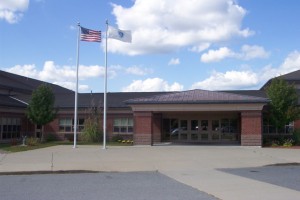 Our first Early Release Day is this Tuesday! Students will be dismissed starting at 12:10 instead of 3:10. The kids usually eat at 11:30. I will plan a snack break at that time, which I hope is especially helpful for those with a long bus ride home. Of course, it’s up to you whether to send a snack or have them eat at home.
Our first Early Release Day is this Tuesday! Students will be dismissed starting at 12:10 instead of 3:10. The kids usually eat at 11:30. I will plan a snack break at that time, which I hope is especially helpful for those with a long bus ride home. Of course, it’s up to you whether to send a snack or have them eat at home.
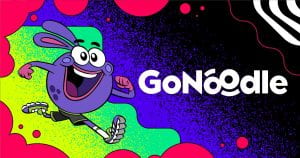 The February Fitness Challenge Begins! Floral’s playground fundraiser has kids in every class taking time to work on fitness goals, with parents sponsoring the fun. We’ll be Zumba-ing our way through the next two weeks using guided moves from GoNoodle. Check out the videos at home!
The February Fitness Challenge Begins! Floral’s playground fundraiser has kids in every class taking time to work on fitness goals, with parents sponsoring the fun. We’ll be Zumba-ing our way through the next two weeks using guided moves from GoNoodle. Check out the videos at home!
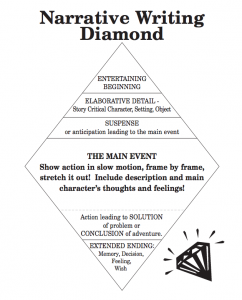 This week we return to Narrative Writing for a month-long study. To write a narrative, the writer has to choose a small moment in time (1/2 hour tops) and elaborate by stretching out the action with details. Consider this event about winning a basketball game: I threw the ball. It went in the net. We won the game. A better narrative stretches it out: I grabbed the hard, orange ball with both hands. I was sweating from head to toe. Please go in, I thought to myself. I slammed the ball down twice and bent my knees… See how the second version puts you in the picture? Students will be writing this week using real events (roller coaster POV vids) and fictional ones. Check out this ride below with your child. How can the action be stretched out, moment by moment?
This week we return to Narrative Writing for a month-long study. To write a narrative, the writer has to choose a small moment in time (1/2 hour tops) and elaborate by stretching out the action with details. Consider this event about winning a basketball game: I threw the ball. It went in the net. We won the game. A better narrative stretches it out: I grabbed the hard, orange ball with both hands. I was sweating from head to toe. Please go in, I thought to myself. I slammed the ball down twice and bent my knees… See how the second version puts you in the picture? Students will be writing this week using real events (roller coaster POV vids) and fictional ones. Check out this ride below with your child. How can the action be stretched out, moment by moment?
The next chapter we will take on in Math In Focus is Chapter 10. If you are following along in the eBook, this is the first chapter in Book B. This chapter sees a return to mental math strategies. The goal here is to make students ever more fluent with numbers by using their understanding of numbers and patterns to compute in their heads. This is where our hard work with place value, number sense, and math facts pays off! Here is the addition strategies we will focus on this week:
1. Add multiples of 1s, 10s, or 100s when you can:
a. 354 + 3 Just add the ones; nothing else needs to change.
b. 354 + 30 Just count up by 10s…364, 374, 384 or Use math facts: 5 + 3 is 8, so 50 + 30 is 80–nothing else changes but the 10s place.
c. 354 + 300 Just count by 100 three times…454, 554, 654. or Use math facts: 3 + 3 = 6 so 300 + 300 = 600.
A great way to practice mental math is to use the Greg Tang Math game Break Apart. Select addition or subtraction, hard or easy to play. Highly recommended!
Reminders:
 The 100th day of school is Tuesday, Feb. 11! Students are encouraged to create a project that shows understanding of numbers, operations, algebra–you name it! Some good examples can be found here!
The 100th day of school is Tuesday, Feb. 11! Students are encouraged to create a project that shows understanding of numbers, operations, algebra–you name it! Some good examples can be found here!
 We will exchange valentines in class on Friday, 2/14. There are 19 students in our class. If you need another copy of our class roster, just let me know!
We will exchange valentines in class on Friday, 2/14. There are 19 students in our class. If you need another copy of our class roster, just let me know!
Here’s some pics of us during science this week. Students evaluated a variety of shoes using their newly acquired knowledge of properties of solids. They predicted which would slide the furthest and tested their ideas–a fun way to combine math and science!
 This week we welcome Danielle Carangelo to our classroom! Danielle is a student teacher from Framingham State who will be joining us in the afternoon on Tuesdays this semester. She brings us her experience as an elementary substitute teacher in Milbury and multi-age dance instructor. We’re sure to learn as much from her as she will from us!
This week we welcome Danielle Carangelo to our classroom! Danielle is a student teacher from Framingham State who will be joining us in the afternoon on Tuesdays this semester. She brings us her experience as an elementary substitute teacher in Milbury and multi-age dance instructor. We’re sure to learn as much from her as she will from us!
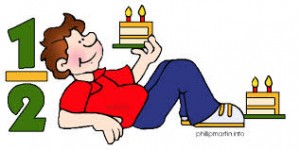 We’re halfway to the end of the year! This is a good time to reflect on our journey, and to thank you for your efforts as partners in your child’s education. It’s remarkable how much growth the kids have shown, from learning skills and critical thinking to their growth as caring members of our learning community. To foster self-reflection, try asking your child to compare how s/he is different now from the start of the year. What things can s/he do now that s/he couldn’t before? What things does s/he still want to learn (goals) and how do they think they can they get there?
We’re halfway to the end of the year! This is a good time to reflect on our journey, and to thank you for your efforts as partners in your child’s education. It’s remarkable how much growth the kids have shown, from learning skills and critical thinking to their growth as caring members of our learning community. To foster self-reflection, try asking your child to compare how s/he is different now from the start of the year. What things can s/he do now that s/he couldn’t before? What things does s/he still want to learn (goals) and how do they think they can they get there?
 Of course, this means the 100th day of school is two weeks away–at this time, Tuesday, Feb. 11! I will set up a “100 Day Museum” to show off student projects and learning. I encourage children to create a poster/collection/display/etc. that somehow represents 100. Instead of simply collecting 100 things in a bag, I’m challenging students to think more deeply about number. They could bring/show something that displays an understanding of number, patterns, and/or the math we’ve done so far, such as:
Of course, this means the 100th day of school is two weeks away–at this time, Tuesday, Feb. 11! I will set up a “100 Day Museum” to show off student projects and learning. I encourage children to create a poster/collection/display/etc. that somehow represents 100. Instead of simply collecting 100 things in a bag, I’m challenging students to think more deeply about number. They could bring/show something that displays an understanding of number, patterns, and/or the math we’ve done so far, such as:
Click here and scroll down for a look at the creative ways that one class took on this challenge. There is also a plethora of projects and ideas on Google and Pinterest and across the web!
 Valentine’s Day is coming! We will exchange valentines in class on Friday, 2/14. If your child brings valentines in for classmates, please be sure there is one for everyone. There are currently 19 students in our class. Refer to our class list sent home if your child wishes to personalize valentines with names. Of course, hand-made ones are welcome as well as store-bought! Please be sure no food (including candy) is attached per our district policy, and thanks!
Valentine’s Day is coming! We will exchange valentines in class on Friday, 2/14. If your child brings valentines in for classmates, please be sure there is one for everyone. There are currently 19 students in our class. Refer to our class list sent home if your child wishes to personalize valentines with names. Of course, hand-made ones are welcome as well as store-bought! Please be sure no food (including candy) is attached per our district policy, and thanks!
 Solving real world problems with measurement is the focus of this week’s math lessons. Consider the following problem. Kids are being asked to think about distance as a quantity expressed in units of measurement–but the process of problem solving remains the same (Understand; Represent; Solve; Check):
Solving real world problems with measurement is the focus of this week’s math lessons. Consider the following problem. Kids are being asked to think about distance as a quantity expressed in units of measurement–but the process of problem solving remains the same (Understand; Represent; Solve; Check):
Here’s us in action last week, using games to practice measuring accurately in centimeters!
 Floral St. has a strong commitment to creating a safe space that respects inclusion and diversity. One way we do that is through teacher-led social groups. These groups provide opportunities for all students to practice social skills, including communication and cooperative skills. Floral’s Early Learning Center (ELC) serves students with diverse needs, some of whom are part of our classroom. They would like to offer students not already in the ELC the opportunity to be peer models in these social groups with their classmates, a practice which has proven to benefit all kids here. Our ELC Coordinator, Rachael Grolman, is sending home a permission slip tomorrow so that kids in our class can participate. Please sign and return it if you give your permission. For more information, you can call or email Rachael at rgrolman@shrewsbury.k12.ma.us
Floral St. has a strong commitment to creating a safe space that respects inclusion and diversity. One way we do that is through teacher-led social groups. These groups provide opportunities for all students to practice social skills, including communication and cooperative skills. Floral’s Early Learning Center (ELC) serves students with diverse needs, some of whom are part of our classroom. They would like to offer students not already in the ELC the opportunity to be peer models in these social groups with their classmates, a practice which has proven to benefit all kids here. Our ELC Coordinator, Rachael Grolman, is sending home a permission slip tomorrow so that kids in our class can participate. Please sign and return it if you give your permission. For more information, you can call or email Rachael at rgrolman@shrewsbury.k12.ma.us
 Our CAFE focus this week is on Identifying Character Traits vs. Feelings. This is part of the Common Core reading standard RL.2.3: Describe how characters in a story respond to major events and challenges. Integrating social studies instruction, we’ll learn to analyze Amelia Earhart’s character traits that made her great and see how her feelings fueled or challenged her. Here’s the author, Brad Meltzer, reading his book I Am Amelia Earhart :
Our CAFE focus this week is on Identifying Character Traits vs. Feelings. This is part of the Common Core reading standard RL.2.3: Describe how characters in a story respond to major events and challenges. Integrating social studies instruction, we’ll learn to analyze Amelia Earhart’s character traits that made her great and see how her feelings fueled or challenged her. Here’s the author, Brad Meltzer, reading his book I Am Amelia Earhart :
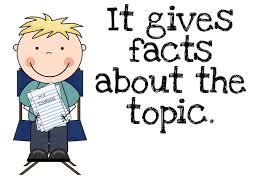 The kids have been learning much about writing informative pieces, including introductions, ideas with supportive details, and conclusions that engage the reader. Here are some from 1) Aadhya, on Hoola Hooping 2) Mason, on football 3) and Ishawn on Pele: 1) The first thing you should know about hula hoops is that you put it on your waist and spin it. You have to spin it fast as you hold the hula hoop. 2) The first thing you should know about football is the equipment that you wear. For one thing, there are shoulder pads and helmets with cushions inside. 3) The first thing you should know is Pele lived in Sao Paulo, Brazil. For one thing, in Sao Paulo he was very poor. He stole peanuts to get money for a soccer kit. He still didn’t have enough money for the soccer cleats. Great work!
The kids have been learning much about writing informative pieces, including introductions, ideas with supportive details, and conclusions that engage the reader. Here are some from 1) Aadhya, on Hoola Hooping 2) Mason, on football 3) and Ishawn on Pele: 1) The first thing you should know about hula hoops is that you put it on your waist and spin it. You have to spin it fast as you hold the hula hoop. 2) The first thing you should know about football is the equipment that you wear. For one thing, there are shoulder pads and helmets with cushions inside. 3) The first thing you should know is Pele lived in Sao Paulo, Brazil. For one thing, in Sao Paulo he was very poor. He stole peanuts to get money for a soccer kit. He still didn’t have enough money for the soccer cleats. Great work!
 This week we begin chapter 7 of Math in Focus, the goal of which is to make students proficient with linear measurement (especially meters and centimeters). To begin, students will learn the importance of standard units of measurement and be introduced to content-specific vocabulary (width; height; length; meter; etc.). They will next develop a sense of how big meters and centimeters are. Then they will learn correct methods for estimating and accurately measuring and talking about measurement (more than, less than, about, exactly). And as always, they will be asked to solve real-world problems that require analysis and application of skills learned. Consider the following problem from this week’s lessons. Notice how it requires students to think about space, length, multiplication/repeated addition, and subtraction to solve it:
This week we begin chapter 7 of Math in Focus, the goal of which is to make students proficient with linear measurement (especially meters and centimeters). To begin, students will learn the importance of standard units of measurement and be introduced to content-specific vocabulary (width; height; length; meter; etc.). They will next develop a sense of how big meters and centimeters are. Then they will learn correct methods for estimating and accurately measuring and talking about measurement (more than, less than, about, exactly). And as always, they will be asked to solve real-world problems that require analysis and application of skills learned. Consider the following problem from this week’s lessons. Notice how it requires students to think about space, length, multiplication/repeated addition, and subtraction to solve it: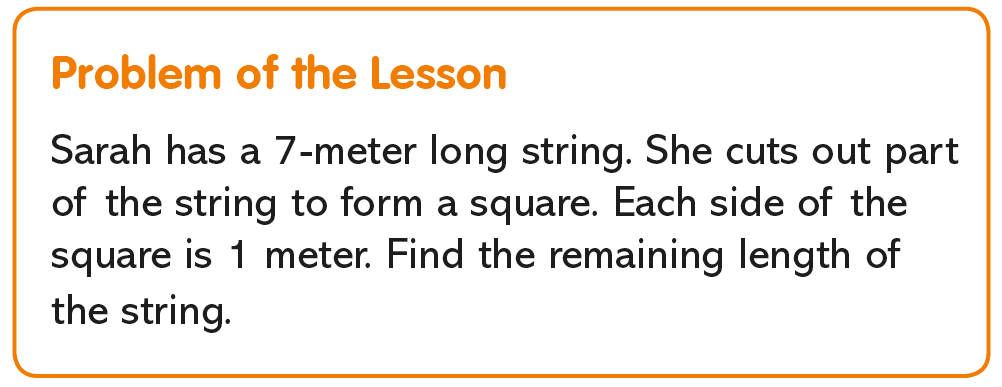
 In Science, students are learning to Ask Questions and Construct Explanations as they explore a variety of objects and substances as part of our study of Properties of Matter. This week they used their senses of observation besides seeing to identify properties of subjects in “Mystery Bags”!
In Science, students are learning to Ask Questions and Construct Explanations as they explore a variety of objects and substances as part of our study of Properties of Matter. This week they used their senses of observation besides seeing to identify properties of subjects in “Mystery Bags”!
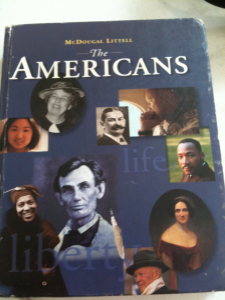 Our Term 2 Social Studies focus is on learning character traits and applying that knowledge to understand famous U.S. and world figures and their contributions. What makes these historical leaders worth remembering? How did Lincoln’s honesty, Cesar Chavez’ determination, Harriet Tubman’s bravery, and Susan B. Anthony’s patriotism affect the lives of others and forever change our understanding of America? These are the kinds of questions we will attempt to answer by analyzing biographical texts and media.
Our Term 2 Social Studies focus is on learning character traits and applying that knowledge to understand famous U.S. and world figures and their contributions. What makes these historical leaders worth remembering? How did Lincoln’s honesty, Cesar Chavez’ determination, Harriet Tubman’s bravery, and Susan B. Anthony’s patriotism affect the lives of others and forever change our understanding of America? These are the kinds of questions we will attempt to answer by analyzing biographical texts and media.
This week, we will analyze the life and achievements of Martin Luther King, Jr. (MLK) and learn to assign character traits to him based on evidence from biographical texts and video. We’ll then use this evidence to create an informative writing piece. Check out this great video from Brainpop. Then consider these traits: determined; hardworking; patriotic; creative; honest; responsible; brave. Which words best apply to MLK? What is your evidence?
Our work on inference continues as we look for clues to how what a character feels and thinks by analyzing their actions. Take for example these lines from Chrysanthemum (Henkes): “On her first day, Chrysanthemum wore her sunniest dress and her brightest smile. She ran all the way.” Keying into important words like sunniest and brightest and ran, we can use our schema plus these clues to infer that Chrysanthemum is full of anticipation, excited for her first day of school. When reading with your child at home, try pausing once in a while and asking what they think is going on in the text, and what words gave them those clues! Here’s a fun online game kids can use to practice:
As we wrap up our study of multiplication, students will be introduced to using equal groups to make sense of odd and even numbers. They’ll divide groups of objects (by “dealing” like cards and by subtracting equal groups) to see if the answer results in a remainder (odd) or not (even). Most students will be familiar with recognizing that even numbers end with 0, 2, 4, 6, 8, but this way they develop a hands-on understanding of the concepts.
 And here’s us at music class, learning to develop a rhythm of steady beats as we sing and play!
And here’s us at music class, learning to develop a rhythm of steady beats as we sing and play!
Happy New Year! I hope your holidays were full of cheer and good memories to cherish. I got to catch up with family and friends and recharge! Onward…
 Community Reader Day is coming! On Friday, March 6 at 9:30, Floral will be filled with Shrewsbury residents who will read to students and share how reading is a joyful and impactful part of their lives. Before I tap into our pool of volunteers to obtain a reader, I want to put it out to our class parents first. If you would like to come in to read and talk to our class, and possibly lead an activity (we can talk), please let me know this week!
Community Reader Day is coming! On Friday, March 6 at 9:30, Floral will be filled with Shrewsbury residents who will read to students and share how reading is a joyful and impactful part of their lives. Before I tap into our pool of volunteers to obtain a reader, I want to put it out to our class parents first. If you would like to come in to read and talk to our class, and possibly lead an activity (we can talk), please let me know this week!
Our CAFE focus this week is on Inferring, which is a strategy we use all the time to help us understand what we’re reading. When we infer, we use our schema (what we already know about something) and combine it with clues from the text to understand something new. Consider these lines from Eloise Greenfield’s poem Things: Went to the beach/Played on the shore/Built me a sandhouse/Ain’t got it no more. My schema tells me that at the beach we build sandcastles, which is what she likely means, and sometimes the ocean comes and washes them away–that’s why the speaker “Ain’t got it no more.” Kids and grownups infer all the time in real life, for example: Snow is in the forecast. When the phone rings at 5:30 AM we can infer school will be delayed or cancelled! It’s smart to catch it when it happens and ask “How did you infer that? What were your clues?” Here is a site that, while designed for teachers, has lots of great info and links on inference: http://www.minds-in-bloom.com/2012/02/tips-for-teaching-inference.html
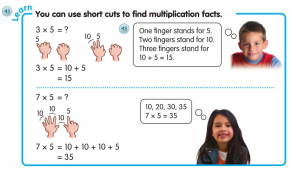
Chapter 6 of MIF focuses on learning multiplication facts of 2s, 5s, and 10s by teaching the connection between skip-counting and multiplication, and using that understanding to solve problems. To solve 8 x 2, for example, we want students to count by 2 eight times. It is a way of learning the meaning behind the numbers involved in multiplication instead of just memorizing facts (which has value, too, just not on its own). One way we teach this is to have students count pairs of objects. Next is counting on fingers while counting aloud by 2 (1 finger up gives you 2, or 1 x 2; etc.). Students will then be introduced to dot paper, which for this chapter shows arrays of 2s, 5s, or 10s. The example below shows 4 x 2. On homework, students should use dot paper by counting down the rows by 2s, then naming how many rows they counted. In this example, they should say “2, 4, 6, 8; I counted 4 times; 4 times 2 is 8.”
To help us use skip counting to multiply, we’ll be using some chestnuts from Schoolhouse Rock–remember those? <“)